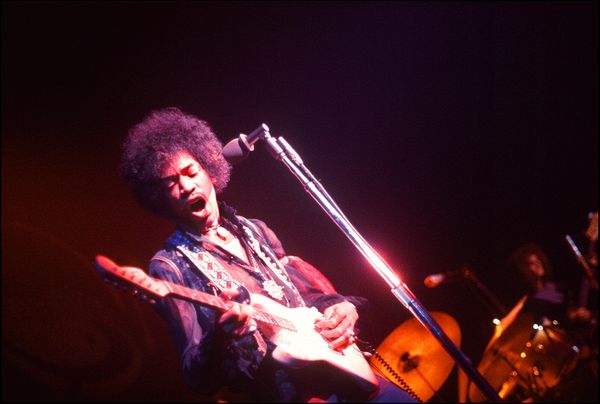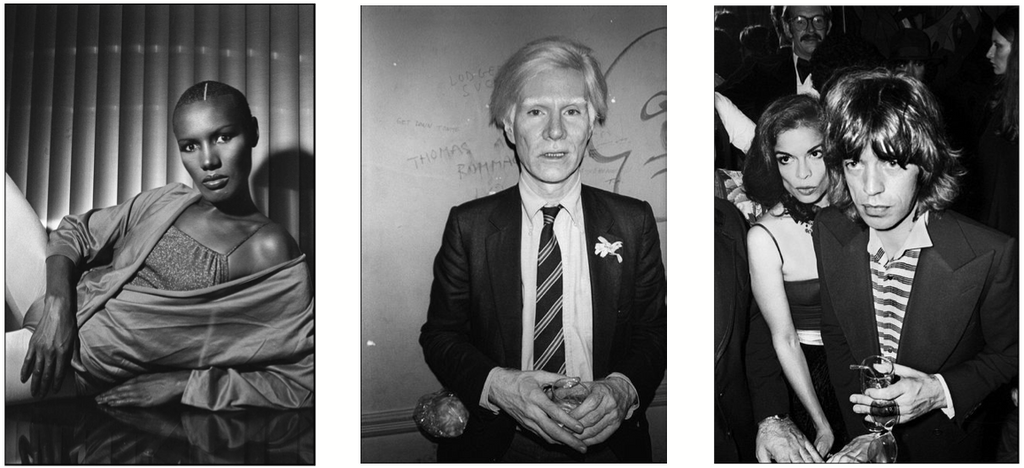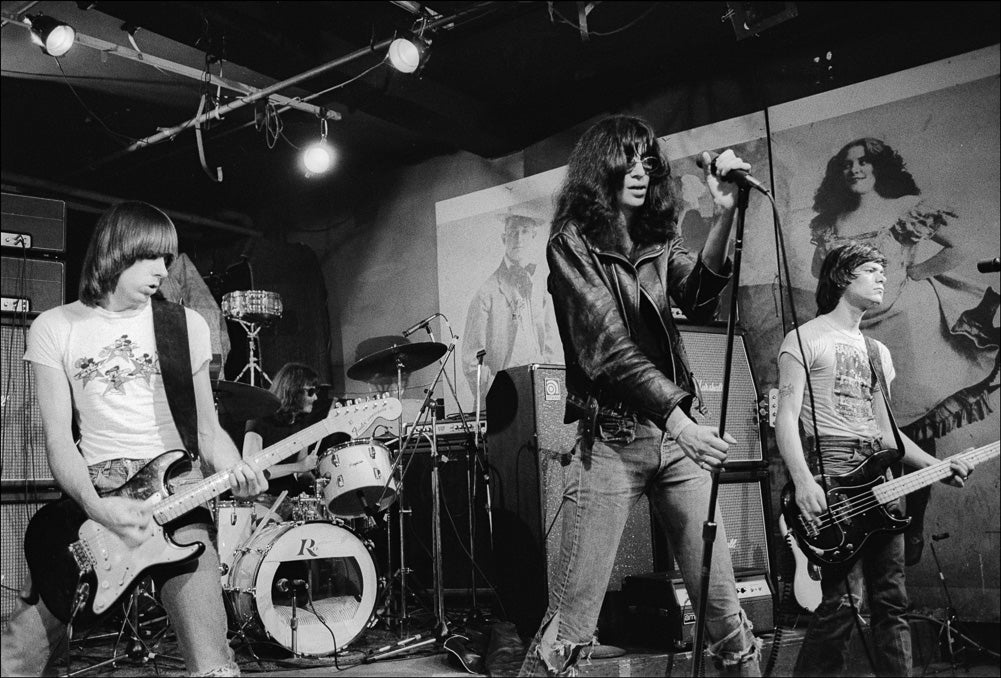Allan Tannenbaum

We had the pleasure of speaking with the great Allan Tannenbaum about his vast career as a photographer and documenting New York City art and music scene.
You started taking photos in the 60’s and worked for SoHo Weekly News as a photojournalist. Were you always drawn toward photography?
I started taking pictures in the 1960’s when I was living in San Francisco. When I was 19 years old a friend had a camera and it just interested me. I bought my own and learned how to use it and taught myself how to develop film and make prints. I would go to different places like North Beach, Haight-Ashbury and just photograph. In fact, I did my first rock concert photography there in 1968 when I photographed Jimi Hendrix performing. So it's just something that developed. I went to film school at San Francisco State, but I decided that I preferred being a still photographer and came back to New York at the end of the sixties. I tried different kinds of jobs like bartending, taxi driving and a merchant marine to support myself. All the time I was taking pictures and looking for work and I finally found what turned out to be the best job in New York City, staff photographer, chief photographer at the Soho Weekly News. An eight-page giveaway when it started, but something that turned into one of the hippest papers. It gave me access and entrée to the art world, the music scene, nightlife, politics and showbiz. It was just an amazing job. So that's how my passion for photography developed. At one point I went to see the famous art photographer, Ralph Gibson, who's still a friend. And he told me when I asked him for advice; "The work will show you the way." And that's what happened

It was such a significant time for art and music in New York City in the 70’s, could you feel it at the time?
When I left San Francisco in the Fall of 1968, it just felt like the end of the era of the sixties were over. I went back to New York and did different kinds of work and then moved to the countryside in New Jersey. I was teaching at Rutgers and was kind of withdrawn from the scene for a while, I guess I had burned out. To me the sixties were over, but when I got the job at the Soho News in 1973, I realized that there was a lot going on that I could be a part of. Certainly in terms of art and music. It was a very exciting time in New York City and you could definitely feel it. Soho was the center of the art world, you could get these inexpensive loft spaces since all the businesses had moved out. There was incredible synergy between the artists, musicians, performers and theater groups and everything else that could use a big space like that for creativity. So it was just an amazing time. It was really the right place at the right time for me as a photographer.

Looking back, who or what have you enjoyed shooting most?
Looking back, I think what I enjoyed covering the most was the music scene in New York in the seventies and early eighties. It was a fantastic time for music. I'm a musician myself. I play guitar, so for me that was just the best. I got to photograph some of my favorite groups like The Rolling Stones and cover a lot of new music like Bob Marley and the punk scene; Ramones, Debbie Harry, Blondie and especially The Clash in the late seventies. They were amazing and they did some great photos with them. So that was the best for me, being part of that music scene, covering these great concerts, getting to hang around backstage andhaving musicians like a Devo and The Clash come to my studio. It was a great time. It was the best.
What was it like photographing such beautiful and intimate moments of John and Yoko and how did it come about?
When John and Yoko were coming out with Double Fantasy, we got in touch with them and scheduled the photo session with Yoko in my studio for the cover of the paper. I arranged to go up to The Dakota the next day to photograph her and then I managed to get some shots with John walking in the park. And when we came back to their office at Studio One, I heard them talking about a video that they're going to be shooting and I suggested that Yoko have me there as a still photographer, she said “We'll see.” A few days later they called me and said, “We're shooting in the park.” And I met John and Yoko as they were filming for “(Just Like) Starting Over.” After that we had a coffee together and Yoko said, “John feels comfortable with you, you will come with us to the studio.”
So I went with them to a gallery in Soho and they did this amazing scene of coming into this bedroom set, first in their street clothes and later in these beautiful kimonos taking off their clothes and getting nude in bed together and stimulating making love. I just said, "I don't fucking believe this." This was incredible. I was a fly on the wall; they were there for the film camera. I managed to get some incredibly beautiful shots and very intimate photographs and John Really loved them. He said to me, “You know, when I saw them later, you really captured Yoko's beauty.” Yoko told me that I make John a happy man with these photographs. So it doesn't get any better than that.
Not only did you take iconic photographs of the New York art and music scene, you have also been around the world and have photographed much more serious situations such as Desert Storm, 9/11 and the Rwandan Refugee crisis. How did this shape you as a photographer?
By the time the Soho News folded in 1982, I had gotten tired of the nightlife and the music scene and I had friends who were covering events around the world, like the revolution in Nicaragua and the apartheid in South Africa. I said, that's what I want to do. So I joined Sigma Agency. It took a couple of years to get started, but eventually I was able to go to South Africa, get assignments for Time magazine. I got a break when I went to the Middle East and covered the first intifada and Israel and the territories and got amazing pictures there that I won to prize for. I went on cover things like the Rwanda refugee crisis and Desert Storm. Of course I got the biggest, ironically and most dangerous story, six blocks from my home when the twin towers were attacked by Islamic terrorists.
So as a photographer, it just shapes you in terms of what you can photograph, the situations you can handle, how you can worry about your safety and then concentrate on operating your equipment to make sure you're getting pictures and to make great pictures that tells a story and bring home the reality of these incredible situations. You see, I think it even shapes you more as a person because when you see a lot of the suffering that goes on in the world and the injustice and how easy it is to die, how precious life is, whether it's from disease or war. A lot of things we take for granted here, you can't in a lot of other places in the world. Life is cheap. So that's an eye opening experience, a life changing experience. It makes you appreciate what we have here, the life we have, so much more.
You have a new documentary coming out. Can you tell us a bit about the project?
I've been covering of the redevelopment of the World Trade Center site after 9:11 and I met some filmmakers who were working for the developer. I was able to get access through them and make friends, to the point where they said, “Let's do a documentary about you.” So we started on that a few years ago. Lately we decided we really have to get this thing moving, so we did a trailer and it looks really great. So now we're trying to use this trailer to get some more professional input and get funding and financing so that we can complete it. There's a lot more to shoot, there's music to license, so we definitely need some money and professional hands to help complete the project. It's going to be really good, it's a very exciting for me. I think it's going to be interesting for a lot of people because of all the different kinds of photography I've done and all the different experiences that I've had. I can tell some good stories. So I'm looking forward to finishing this documentary.
Top 5 albums you can’t live with out?
Let's see. The Rolling Stones, It's Only Rock ‘n Roll. Danny Gatton, 88 Elmira St. Herbie Hancock, soundtrack for Blow-Up. Van Morrison, A Night in San Francisco, and Mitch Ryder's Greatest Hits.
We would like to thank the incredible Allan Tannenbaum for chatting with us!


